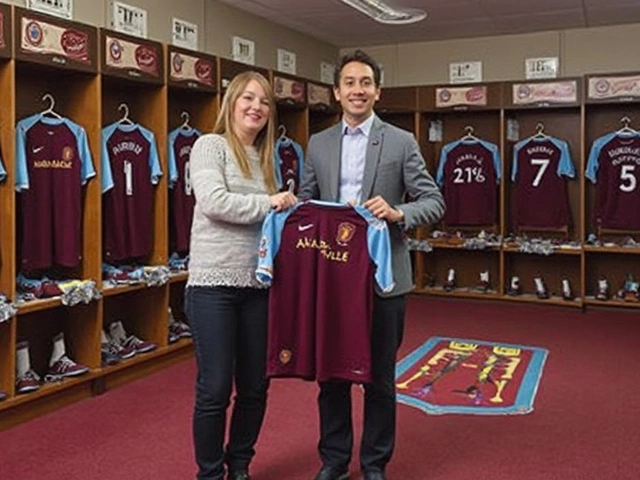When South Africa national rugby union team edged out Argentina national rugby union team 29‑27 at Twickenham Stadium on October 4, 2025, the Springboks secured a sixth Rugby Championship title – and a place in history. The win, coming in the final round of the 2025 Rugby ChampionshipSouthern Hemisphere, left South Africa level on points with the All Blacks but ahead on points difference, sparking celebrations from the stands to the streets of Johannesburg.
Background: The Rugby Championship’s Evolution
Since its inception in 1996, the competition – administered by SANZAAR – has pitted the powerhouses of the Southern Hemisphere against each other: South Africa, New Zealand, Australia and Argentina. Over fourteen editions, the tournament has become a barometer for form ahead of the World Cup, and 2025 marked a bittersweet turning point. After this season, the classic annual format will give way to the new Nations Championship, a biennial showcase that promises expanded participation and a fresh calendar.
Here’s the thing: fans have grown accustomed to the rhythm of a yearly showdown. The shift means teams will have fewer chances to test themselves against top rivals, making every match in the final 2025 edition feel even more crucial.
2025 Tournament Overview
The 2025 edition kicked off on August 16 with South Africa hosting Australia in Durban. A hard‑fought 24‑17 win set the tone for the Springboks, who would later pile up four victories and two defeats, finishing the round‑robin with 19 competition points. Their bonus‑point haul came from scoring at least four tries in three games and a narrow loss to New Zealand that still earned a defensive bonus.
New Zealand’s All Blacks matched the Springboks on points but trailed on points difference (+8 versus +57). The Kiwi side recorded a 28‑14 win over Australia in the penultimate round, keeping them in contention but ultimately falling short.
Australia, despite flashes of brilliance – a 31‑19 triumph over Argentina in Melbourne – finished third with 11 points. Argentina, the underdogs with a memorable 24‑point outburst against the All Blacks at Estadio José Amalfitani in June (their highest home total against New Zealand ever), ended the tournament in fourth place with 10 points.
Decisive Final Round at Twickenham
Only the second time a Rugby Championship match has been staged at the iconic London venue – the first being Argentina versus Australia in 2016 – the October 4 showdown carried extra drama. It arrived exactly one week after the 2025 Women’s Rugby World Cup final, underscoring the global appetite for elite rugby.
South Africa’s back‑rower John van Mey opened the scoring with a penalty in the 4th minute. Argentina answered with a try from winger Luis Giménez, converting to lead 7‑6. The Springboks rattled off two quick tries – a powerful run by Jaden Moore and a slick intercept by full‑back Kyle Stewart – to go 20‑7 at halftime.
But the Pumas weren’t done. A late‑second‑half surge saw them notch 20 points, including a try from captain Martín Sanchez. The final minutes were a nail‑biter: South Africa held a 29‑27 edge after a missed Argentine conversion in the 78th minute. "We knew we had to finish strong," said Springboks head coach Rudi Stoltz in the post‑match press conference. "The boys showed heart, and the crowd at Twickenham gave us that extra push."
Statistical Snapshot and Player Highlights
- South Africa scored 27 tries while conceding just 20, earning two bonus points for attacking play.
- New Zealand posted 21 tries for and 17 against, also netting two bonus points.
- Australia’s attack yielded 21 tries, but defensive lapses saw 17 points against.
- Argentina’s defense struggled, allowing 30 tries – the most by any side in a single Championship.
- Overall points: South Africa 208 for, 151 against; New Zealand 159 for, 151 against; Australia 151 for, 173 against; Argentina 140 for, 178 against.
Individually, Springboks fly‑half Thabo Ndlovu walked away with the tournament’s top‑point scorer accolade, tallying 85 points from kicks and tries. For Argentina, full‑back Javier Lopez impressed with 60 meters gained and a crucial try in the final.
Reactions from Stakeholders
South African Rugby Union president Lebo Mkhize hailed the win as “a testament to the depth of our talent pipeline.” He added that the upcoming Nations Championship will demand “even greater strategic planning, especially with the longer off‑season.”
Meanwhile, New Zealand’s captain Sam Kell remained upbeat: “We’ll take the lessons from this campaign and come back stronger. The competition is getting tighter, and that’s good for the sport.”
Argentina’s coach Gonzalo Ramírez was proud of his side’s progress: “Scoring 24 points against the All Blacks at home is historic for us. It shows we belong at this level.”
Future Implications: The Nations Championship
Starting in 2027, the rebranded Nations Championship will be held every two years, featuring the same four core nations plus two invited teams from Europe or the Pacific. The shift aims to reduce player burnout and align better with club calendars.
Analysts predict that South Africa’s victory will boost their World Rugby ranking, potentially placing them back in the top two spots. The win also strengthens the Springboks’ case for a favorable seed in the 2027 Rugby World Cup.
For the fans, the Twilight‑at‑Twickenham spectacle proved that the Championship can thrive beyond the Southern Hemisphere, opening doors for future European venues – a notion that could dovetail nicely with the Nations Championship’s broader ambitions.
Key Takeaways
- South Africa clinched a sixth title by virtue of a superior points difference.
- The final was played at Twickenham, marking only the second UK appearance for the tournament.
- Argentina recorded a historic scoring feat against New Zealand.
- The 2025 edition serves as a farewell to the annual Rugby Championship format.
- Stakeholders are already looking ahead to the biennial Nations Championship.
Frequently Asked Questions
How will the Springboks’ win affect their world ranking?
World Rugby’s ranking algorithm awards points for victories against higher‑ranked opponents and for winning by large margins. South Africa’s six‑point triumph over Argentina, coupled with a superior points difference over New Zealand, is expected to lift them at least two places, putting them back into the top two for the next ranking cycle.
Why is the tournament moving to a biennial format?
SANZAAR cited player welfare and calendar congestion as key reasons. The longer interval reduces the risk of burnout, aligns the competition more closely with the six‑year World Cup cycle, and allows room for additional invitational teams under the upcoming Nations Championship framework.
What made the Twickenham match so special?
It was only the second time a Rugby Championship game was staged at the historic London venue, and the timing – a week after the Women’s Rugby World Cup final – turned the city into a rugby hub. The neutral ground added a different atmosphere, with a packed crowd of over 80,000 creating a memorable backdrop for the title decider.
How did Argentina manage to score 24 points against the All Blacks?
A combination of aggressive set‑piece play and swift back‑line moves caught New Zealand off‑guard. Wing Luis Giménez broke through the defensive line for two tries, while accurate kicking from fly‑half Marco Diaz kept the scoreboard ticking. The 24‑point haul set a new home‑record against the All Blacks, surpassing their 1985 high of 21.
Will we see more European venues in future Rugby Championships?
The success of the Twickenham fixture has sparked discussions within SANZAAR about occasional matches in Europe, especially under the new Nations Championship. Organisers see value in expanding the fan base and generating additional revenue, but logistics and travel costs remain key considerations.








Write a comment